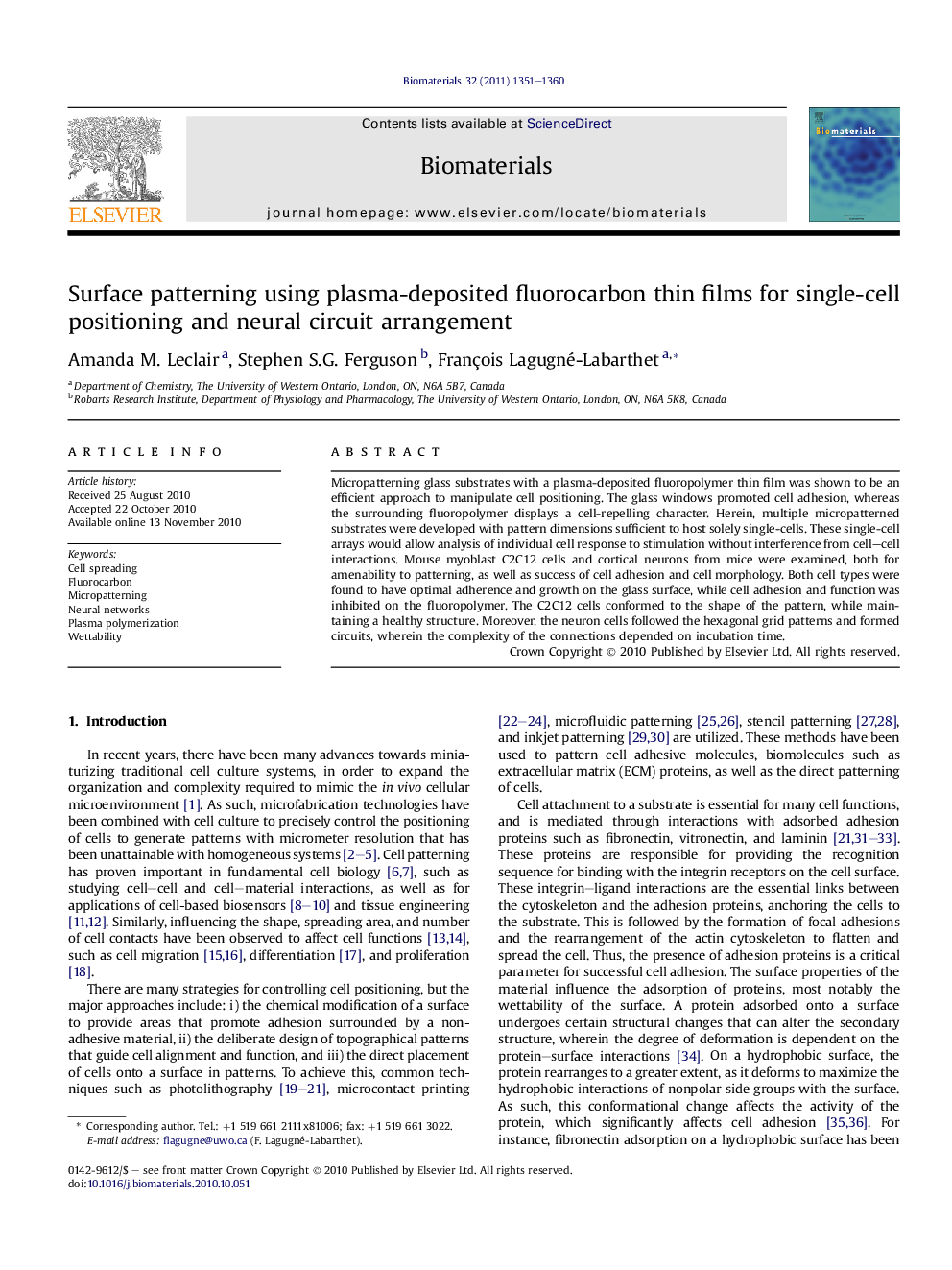| Article ID | Journal | Published Year | Pages | File Type |
|---|---|---|---|---|
| 7835 | Biomaterials | 2011 | 10 Pages |
Micropatterning glass substrates with a plasma-deposited fluoropolymer thin film was shown to be an efficient approach to manipulate cell positioning. The glass windows promoted cell adhesion, whereas the surrounding fluoropolymer displays a cell-repelling character. Herein, multiple micropatterned substrates were developed with pattern dimensions sufficient to host solely single-cells. These single-cell arrays would allow analysis of individual cell response to stimulation without interference from cell–cell interactions. Mouse myoblast C2C12 cells and cortical neurons from mice were examined, both for amenability to patterning, as well as success of cell adhesion and cell morphology. Both cell types were found to have optimal adherence and growth on the glass surface, while cell adhesion and function was inhibited on the fluoropolymer. The C2C12 cells conformed to the shape of the pattern, while maintaining a healthy structure. Moreover, the neuron cells followed the hexagonal grid patterns and formed circuits, wherein the complexity of the connections depended on incubation time.
